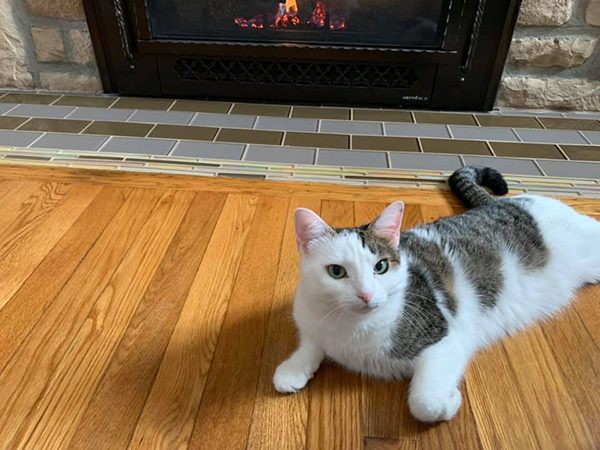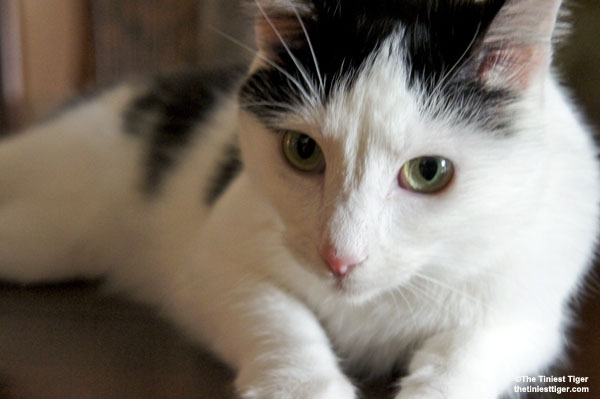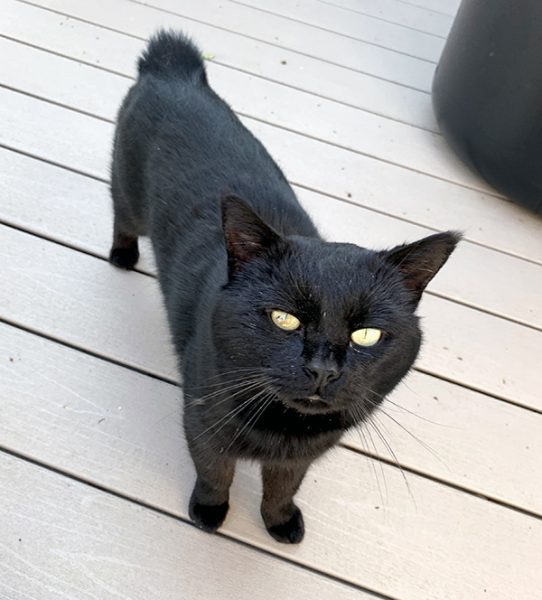
Cat Facial Expressions: Understanding Your Feline Friend
Cat facial expressions are a window into their emotions. Understanding cat facial expressions can help cat owners to better care for their pets and recognize when something is wrong. Cats use a variety of facial expressions to communicate their emotions, including happiness, fear, aggression, and pain.
A recent study published in Behavioural Processes, researchers tallied 276 different feline facial expressions, used to communicate hostile and friendly intent and nearly every expression in between. The researchers found humans might be the reason. Cats may have evolved this range of sneers, smiles, and grimaces over the course of a 10,000 year history of living alongside humans.
Researchers discovered a total of 276 distinct facial expressions made toward other cats—not so far removed from the 357 produced by chimpanzees. More than many had thought cats capable of making. Each expression combined about four of 26 unique facial movements, including parted lips, jaw drops, dilated or constricted pupils, blinks and half blinks, pulled lip corners, nose licks, protracted or retracted whiskers, and/or various ear positions. By comparison, humans have 44 unique facial movements, although researchers are still working out how many different expressions they combine. Dogs have 27 facial movements, but their total number of expressions isn’t known.
Decoding Cat Facial Expressions
Decoding cat emotions through facial expressions is not always easy, but with practice, cat owners can learn to recognize the subtle cues that cats use to communicate. For example, a relaxed cat will have half-closed eyes with enlarged and relaxed pupils, while an alert cat will have wide-open eyes with dilated pupils. A cat that is feeling aggressive will have a tense body posture, with flattened ears and narrowed eyes.
Cat body language is an important tool for cat owners to understand, as it can help to prevent misunderstandings and improve the bond between cats and their owners. Recognizing pain through a cat’s facial expressions is also important, as cats are often good at hiding their pain. By learning to recognize the signs of pain, cat owners can provide their pets with the care they need to feel better.
Key Takeaways
- Understanding cat facial expressions can help cat owners to better care for their pets and recognize when something is wrong.
- Decoding cat emotions through facial expressions is not always easy, but with practice, cat owners can learn to recognize the subtle cues that cats use to communicate.
- Cat body language is an important tool for cat owners to understand, as it can help to prevent misunderstandings and improve the bond between cats and their owners.
Understanding Cat Facial Expressions

Cats are known for their subtle and nuanced facial expressions that can convey a wide range of emotions. Understanding these expressions is essential to communicate with your feline friend and respond appropriately to their needs.
Cat Facial Muscles
Cats have a total of 32 facial muscles, which is 12 more than humans. These muscles allow them to make a wide variety of facial expressions, including raising their eyebrows, wrinkling their noses, and moving their ears. By understanding the different facial muscles and movements, you can interpret your cat’s emotions more accurately.
Common Cat Facial Expressions
Some of the most common cat facial expressions include:
- Ears flattened back: This expression indicates that your cat is feeling scared or threatened.
- Eyes wide open: Wide-open eyes can mean that your cat is feeling alert or excited.
- Blinking eyes: Cats often blink slowly when they are feeling relaxed and content.
- Purring: Purring is a sign that your cat is feeling happy and content.
- Whiskers forward: When a cat’s whiskers are forward, it indicates that they are feeling curious or interested in something.
Decoding Cat Facial Expressions
Decoding cat facial expressions can take some practice, but it is an essential skill for any cat owner. Look for subtle changes in your cat’s facial muscles and movements, such as the position of their ears or the shape of their eyes. Pay attention to their body language and vocalizations, as these can also provide important clues about their emotions.
By understanding your cat’s facial expressions and body language, you can communicate more effectively with your feline friend and build a stronger bond.

Decoding Cat Emotions Through Facial Expressions
Cats are known for their mysterious and enigmatic nature, but understanding their emotions is not impossible. By carefully observing feline facial expressions, one can determine their emotional state.
Relaxed Cat
A relaxed cat will have open eyes, ears facing forward, a relaxed muzzle, and loose and curved whiskers. Their mouth may be slightly open, and they may even appear to be smiling. A relaxed cat is content and comfortable in their environment.
Alert Cat
An alert cat will have dilated pupils, ears facing forward, and whiskers pointing slightly forward. They may also have a slightly tense mouth. An alert cat is curious and interested in their surroundings.
Stressed Cat
A stressed cat will have dilated pupils, ears flat and rotated outward, a tense mouth, and whiskers pushed forward and staring. They may also have a slightly open mouth with a wrinkled nose. A stressed cat is uncomfortable and may be experiencing pain or anxiety.
Frightened Cat
A frightened cat will have dilated pupils, ears flattened against their head, and whiskers pushed forward and staring. They may also have an open mouth with a wrinkled nose and may be hissing or growling. A frightened cat is scared and may feel threatened.
Threatened Cat
A threatened cat will have dilated pupils, ears flattened against their head, and whiskers pushed forward and staring. They may also have an open mouth with a wrinkled nose, hissing or growling. A threatened cat is feeling defensive and may attack if provoked.
Scared Cat
A scared cat will have dilated pupils, ears flattened against their head, and whiskers pushed forward and staring. They may also have an open mouth with a wrinkled nose and may be hissing or growling. A scared cat is feeling vulnerable and may hide or run away.
Understanding cat facial expressions is crucial in determining their emotional state. By carefully observing their eyes, ears, muzzle, and whiskers, one can determine whether a cat is relaxed, alert, stressed, frightened, threatened, or scared.
Cat Body Language and Its Importance
Cat body language is the primary way that cats communicate with humans and other animals. Understanding cat body language is essential for cat owners to understand their pet’s moods, needs, and desires.
Cats use a variety of body language cues to communicate, including facial expressions, ear position, tail position, and body posture. For example, a cat that is feeling relaxed and happy will have their ears forward, their tail held high, and their body posture will be relaxed. Conversely, a cat that is feeling threatened or scared will have their ears flattened against their head, their tail tucked between their legs, and their body posture will be tense.
It is essential to pay attention to a cat’s body language because it can help prevent misunderstandings and avoid potential conflicts. For example, if a cat is showing signs of aggression, such as hissing, growling, or swatting, it is best to give the cat space and avoid interacting with them until they calm down.
Understanding cat body language is also crucial for cat owners to provide their pets with a safe and comfortable environment. For example, if a cat is hiding or avoiding certain areas of the house, it may be a sign that they are feeling stressed or anxious. In this case, the cat owner may need to make changes to the environment to make it more comfortable for their pet.
In conclusion, understanding cat body language is critical for cat owners to provide their pets with the care and attention they need. By paying attention to a cat’s body language, owners can better understand their pet’s moods, needs, and desires and provide them with a safe and comfortable environment.
Recognizing Pain Through Feline Facial Expressions
Cats are known for their stoic nature, which can make it difficult for their owners to recognize when they are in pain. However, cats do exhibit certain facial expressions that can indicate discomfort or pain. By learning how to recognize these expressions, cat owners can better assess their cat’s well-being and take appropriate action.
One of the most common signs of pain in cats is a change in their facial expression. When cats are in pain, they may have their eyes open with dilated pupils. This is because pain can cause the body to release adrenaline, which can cause the pupils to dilate. Additionally, cats may squint or blink excessively when they are in pain.
Another way to recognize pain in cats is by observing their facial expressions. A recent study published in Scientific Reports developed an automated pain recognition system for cats by analyzing facial expressions. The system was able to accurately identify pain in cats with an accuracy rate of 95%. The study found that cats in pain had more wrinkles above their nose, their ears were rotated more to the side, and their whiskers were pulled back.
There are also manual tools for pain assessment from facial expressions that have been suggested and validated for several animal species. For example, a new feline pain scale interprets pain from cats’ facial expressions by scoring each facial action unit. A total score of 4 or more means the cat is in pain and needs analgesia. The maximum total score is 10.
Recognizing pain in cats can be challenging, but by observing their facial expressions and behavior, cat owners can better assess their cat’s well-being. Dilated pupils, excessive blinking or squinting, wrinkles above the nose, rotated ears, and pulled back whiskers are all signs of pain in cats. By being aware of these signs, cat owners can take appropriate action and seek veterinary care if necessary.
Role of Cat Whisperers in Understanding Feline Facial Expressions
Cat whisperers are individuals who have a unique ability to read and understand feline expressions. According to a recent survey, cat whisperers are mostly young and female [1]. These individuals have an innate ability to interpret the subtle nuances of a cat’s facial expressions and body language, which allows them to communicate and bond with cats on a deeper level.
Cat whisperers play a crucial role in helping cat owners understand their pets’ needs and emotions. By interpreting a cat’s facial expressions and body language, cat whisperers can help cat owners identify when their cats are feeling stressed, anxious, or in pain. This can be particularly important when it comes to identifying health issues that may not be immediately apparent.
Cat whisperers can also help cat owners build stronger bonds with their pets. By understanding a cat’s body language and facial expressions, cat owners can better communicate with their cats, which can lead to a deeper understanding and connection between the two.
While not everyone is a cat whisperer, there are ways to improve your ability to read and interpret feline expressions. By observing your cat’s body language and facial expressions, you can begin to identify patterns and understand what your cat is trying to communicate. Additionally, working with a professional cat behaviorist can help you develop a deeper understanding of your cat’s needs and emotions.
Cat whisperers play a vital role in helping cat owners understand their pets’ needs and emotions. By interpreting a cat’s facial expressions and body language, cat whisperers can help cat owners build stronger bonds with their pets and identify potential health issues. While not everyone is a cat whisperer, there are ways to improve your ability to read and interpret feline expressions.
Cat Videos as a Learning Tool
Cat videos are a popular source of entertainment on YouTube, but they can also be a valuable tool for learning about cat behavior and facial expressions. Many cat owners and trainers use these videos to help them better understand their feline friends and improve their training techniques.
One benefit of using cat videos as a learning tool is that they provide a wide range of examples of cat behavior and facial expressions. By watching videos of cats in different situations and contexts, viewers can learn to recognize the subtle cues that cats use to communicate their feelings and intentions.
Another advantage of using cat videos for training is that they allow trainers to observe and analyze cat behavior without risking injury to themselves or their cats. For example, a trainer could watch a video of a cat displaying aggressive behavior and use that information to develop a plan for addressing similar behavior in their own cat.
In addition to providing examples of cat behavior, cat videos can also be a source of inspiration for new training techniques. Watching videos of cats performing tricks or responding to commands can give trainers ideas for new training exercises to try with their own cats.
Overall, cat videos can be a valuable tool for cat owners and trainers looking to improve their understanding of cat behavior and facial expressions. By watching these videos and analyzing the behavior of the cats in them, viewers can gain a deeper insight into the world of feline communication and develop more effective training techniques.